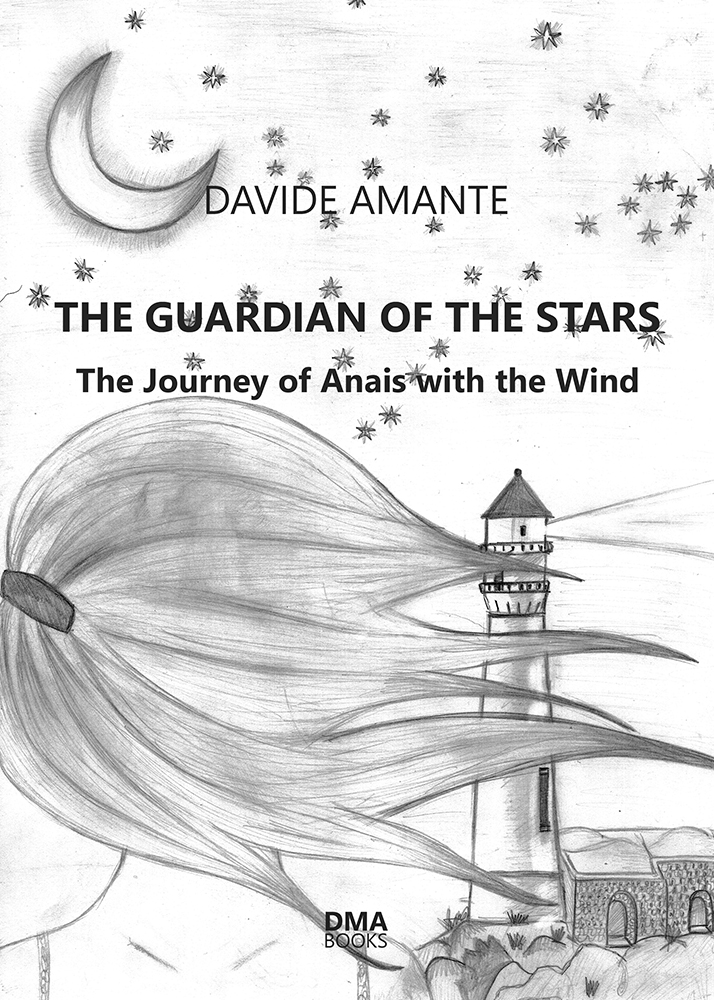Dialogic Reading with children, what every parent should do at least twice a week.
A modern practice designed to enhance children’s language and literacy skills, was designed and developed in the last decades in the United States. This practice roots way back into American traditions. We discuss Dialogic Reading with Novelist Davide Amante who has used extensively this practice with teachers in schools and found it a much more useful and far-reaching pedagogic tool than expected.
Davide Amante is author of the bestseller ‘The Guardian of the Stars – the journey of Anais with the wind’ a children’s novel that many teachers chose as a reference for Dialogic Reading. The book was first released in 2019 in Italy, it is a top seller and it has been recently awarded ‘Best Children’s Book of the Year 2021’ and it is translated in over 6 countries. Davide Amante shares with us his direct experience with children in public and private schools and his conclusions regarding Dialogic Reading.
Dialogic Reading, on common ground, is the process of developing a dialogue with students around the text they are reading. It was initially theorized by the Interactive Reading Model by psychologist David E. Rumelhart in 1977. The first detailed studies on Dialogic Reading date back to the 1980s especially by Grover J. Whitehurst, former director of the Institute of Education Sciences, the research arm of the United States Department of Education, in an attempt to offer a solution to the lack of dexterity and talent in solving problems, highlighted in particular in the children of the less well-off classes in the United States, who rarely had the opportunity to read books. It soon became clear that lack of reading, or even a limited score in terms of number of books read each year, directly influenced children’s relational and behavioral abilities, limited their vision and scope in a particularly important period of our life, where we lay the foundations of our future. The United States were the first to address this issue and offer a practical solution that eventually evolved into the Dialogic Reading method.
“I have two children and at one point of my career as a novelist I decided it was time to write a novel for children. I didn’t expect it to have such a success. Among the many readers, I was called by a number of teachers from private and public schools in Italy who proposed me basically to test the Dialogic Reading method using my novel as a reference text and involving classes of students of different ages. I had studied and written many times about Dialogic Reading and having now written a novel for children, I suppose they considered me as the right person for the job.”
“It was an extraordinary experience where I was given the opportunity to test the limits of Dialogic Reading and see how far this technique can go. This is an exceptional pedagogic instrument, still insufficiently studied, which reaches deep and far in the minds of students.” tells us Davide Amante.
Current research proved Dialogic Reading effective in a wide range of situations that include students with good literacy levels as well as with low literacy skills and it has proven effective with students with disabilities, ranging from dyslexia to autism and a number of developmental disorders. Additionally, Dialogic Reading has a limited cost, making this method practicable almost anywhere: information is freely available and it’s all about the cost of buying a book. Dialogic Reading can be used by teachers and parents with children, individually or in small groups.
The correct approach to Dialogic Reading
Adults reading for the first time the work of an outstanding novelist find themselves in the situation of a man or a woman sitting by herself in a lonely beach at night in front of the sea and under a starry sky: a literary work opens your inner self and takes you far, reveals questions about life, makes you feel connected with life, unleashes dreams and imagination just as much as fears and inspiration, opens your heart to the unexpected.
Similarly, children facing for the first time a work of literature, however simple may it be, are carried with all their being into the story to the point of being completely involved with their imagination and fresh intellect into a world of new values, dreams and events represented by the story.
However, the adult reader walks through this process consciously, starting from the very moment he or she buys online or draws the new book from the shelf of a bookshop. The adult lets himself or herself be carried by the author beyond known boundaries.
Children, on the other hand, are facing a relatively new object, the book, whose extent and scope they legitimately still don’t understand. As they read through the story, consciousness opens and they experience a number of emotions.
In Dialogic Reading the adult is there to put an order and offer guidance into consciousness and emotions. Actually, the role of the adult should be as limited as possible, never invasive, and let the children find their own order in things. That’s the difficult part of Dialogic Reading: you want it, but you want it the least possible.
The adult has learned not to categorize when approaching a fiction novel. The ‘good reader’ has sufficient empathy as to let the author pick him or her up and carry the reader into the author’s world, revealing the unexpected. On the other hand, when approaching a nonfiction text, the reader is widely prepared to classify the text, absorb the contents and arrange them into their knowledge system.
Children, however, are facing multiple difficulties when reading a book, whether fiction or nonfiction. These difficulties range from the mere understanding of the meaning of a word, to understanding the choice in the construction of a phrase, to the full understanding of the scope of a book. To put it in other words, the boundaries of a book and its contents are still indistinct to a child.
The practice of Dialogic Reading and the variables of age and text
Initially, Dialogic Reading was considered as a method to interactively share picture-book reading to children, aimed at enhancing their literacy and language skills. Many still consider this way Dialogic Reading, posing a limit to the use of this exceptional pedagogic instrument. Davide Amante uses the term pedagogic, when referring to Dialogic Reading, because this method has an educational and formative reach that definitely goes far beyond reading and sharing picture-books with children. Recent research, psychologists as well as myself acknowledge that Dialogic Reading is much more than this.
The essential practice of Dialogic reading remains the same since it was originally defined. An interactive shared reading practice in which, during the reading time, the adult and the child switch roles so that the child is stimulated by the adult to talk about what he or she is reading almost becoming the storyteller, with the adult actively listening and questioning. In Dialogic Reading, the adult stimulates the child to actively participate to the story and become the “storyteller”, by expressing the emotions and the thoughts that each paragraph is inspiring. In the case of the teacher this process is carried out with all the class participating and this is of great importance because not only the children are investigating what they feel and think, but they are also sharing and comparing in real time their feelings and thoughts with those of others, thus opening up faster to a number of nuances, if not unexpected interpretations of the story.
However, there are two important variables that gained importance over time: the age of the children and the level of difficulty of the book. Of course, the two variables are interrelated.
Referring to the age of the children, Dialogic Reading originates as a picture-book reading practice, thus involving children of ages suited for this type of books. “But, if you move the age cursor forward, you realize that Dialogic Reading is incredibly effective at any age. For instance, I had to do with children ranging from 5 years of age up to 16 and it always worked. What obviously changed was the adult’s approach, whether a parent or a teacher the switching of roles and the stimulus you can give to a child of 5 years of age is quite different from what you would do with a teenager”, continues Davide Amante. The point is that the child and the teenager alike are actually in need of Dialogic Reading because they want to explore and understand more of life. A sufficiently prepared adult is able to intercept these differing needs and help give them an answer. With smaller children the stimulus and the switching of roles is simpler, more imaginative, and the guidance role of the adult is seen as unquestionable, whereas with a teenager the game is played on a more intellectual base in which the younger has already an estabilished vision of life and an understanding of behaviors and the older can offer guidance on understanding deeper or better adjusting this vision. The interesting aspect is that all happens with the intermediation of a text, independently from the age it is always the interpretation of the text that relates adult and younger student, not the individualities of each.
Referring to the quality/difficulty of the text, Dialogic Reading proves again to be an exceptional instrument. There is a tendency in the latest years to give an age range to books for children. But who says that only children of a certain age onwards should read ‘The Little Prince’ or ‘The Guardian of the Stars – The journey of Anais with the wind’, “The Wizard of Oz”, “Alice in Wonderland”, to cite a few? These books should really be read by children of a certain age onwards? These titles should really be connected to a defined age of readers?
“I am convinced that giving an age range to a children’s book is wrong. As long as the book is written for children and the book addresses substantial themes of life, there is no age range”, declares Davide Amante.
For difficult that the book may appear, children will retain the meaning, the emotions, the world that the author set up, even if they will not completely comprehend the construction and the significance of phrases. This is a powerful stimulus for the child to explore and understand more.
The results of Dialogic Reading
” I have never seen such an immediateness in capturing the essence of a book as I have seen in small children, even though they could understand one out of five phrases I read. I have never seen such an involvement with the story of a book as I have seen in small children, even though they could reasonably comprehend one out of five emotions I read. I have never seen such an openness to make the values of a book their own values as I have seen in small children, even though they could barely understand the entire system of values contained in the book. I go proud to say that some critics and journalists compared my novel ‘The Guardian of the Stars – The journey of Anais with the wind’ to a modern ‘The Little Prince’ with a girl protagonist. Well, I used my novel for Dialogic Reading to children aged from 5 to 16 and I honestly guarantee that the smallest groups of children I read it to were perfectly able to catch the essence of each chapter and precisely align with my feelings as an author when I wrote the novel.” says Davide Amante.
During meetings at schools with children and teachers, Davide Amante used to read to multiple classes for an hour and then there was an additional half an hour in which children were free to raise any question they wanted. He says he never received so profound, intimate and involved questions as he did from small children that were not supposed to be of an adequate age for reading a novel like his. All themes of his novel were questioned and fathomed and there was no theme, not even melancholy, solitude, longing, growing up, love, that was left behind. Children understood everything and he says, provided that he answered openly, with his heart, he was able to perfectly connect with children and understand them.
Maieutic as a key pedagogic factor in the development of children literacy and skills
As you dive deeper into Dialogic Reading you discover that this practice is very close to the practice of Maieutic, developed by ancient Greek philosopher Socrates and aimed at bringing children’s latent ideas into the realm of clear consciousness. Although the Socratic method refers to adults and follows precise rules that are of relative importance to our discussion, nonetheless Dialogic Reading precisely mirrors the scope of that ancient method, which was to stimulate critical thinking, draw out ideas and underlying presuppositions.
The intensity and level of interaction with the audience is decided by the teacher or the guiding adult, depending on the age of the children and/or the difficulty of the text. The fine-tuning of the level of interaction here is paramount. An excessively difficult interaction would lead to children detaching from the text, an overly easy interaction would lead to children losing interest and stimulation from this method.
Once the right level of interaction is determined, children could tackle almost any text. Dialogic Reading shows us that it is not so important for children, especially in the first stages of learning, to have a complete, immaculate, control over language and its rules which leads to a linguistic understanding of a text. Rather, it is much more important for a child to understand the meaning of a text and what the author intended to do writing that particular text, because the moment a child begins to understand the approach and the construction that an author developed around an idea or an emotion, that child is actually understanding the potential of language and developing true literacy skills. Losing the details of each phrase here is not really important, what matters for the child is having the vison d’ensemble as the French would say, that the author traced.
“What matters in this process is the enormous intellectual and emotional stimulus that Dialogic Reading activates”, says Davide Amante
As you move up with the children’s age, Dialogic Reading remains a fundamental instrument, as long as the adult begins to highlight deeper or more complex aspects of the literary text, to discuss and share. With older children dialogic reading also becomes an exceptional instrument to discuss aspects of life that go beyond the intent of the author and the tale. A good tale always touches essential themes of our lives.
“Having one only book, ‘The Guardian of the Stars – the journey of Anais with the wind’, I used it with classes of children of all ages and, provided the adult is ready to listen to children and answer adequately, you can effortlessly tackle this text, like The Little Prince or any other text of similar level, with children of any age, strongly developing their spirit of observation, their linguistic skills, their ability to take and shape a subject from different points of view.”
Dialogic reading is the active interpretation of one’s emotions and thoughts in relation to a literary text, shared and compared with other’s emotions and thoughts.
The process of interpreting a text, especially in early ages, is fundamental to the development of thinking, discerning through concepts and understanding situations.
The process of comparing one’s own interpretation with others’, again especially in early ages, is fundamental for the social development of children and for the development of a balanced relationship with others within the social group to which children belong and, even more, a balanced and unprejudiced relationship with differing cultures.
We use many times the word intelligent but not all know that this word comes from ancient latin’s intelligere which literally means ‘reading inside’ things. An intelligent person is a person capable of reading surrounding things, events, situations. Ability to read inside is the key concept here. Reading inside does not mean passively absorbing the author’s world, on the contrary it means critically analyzing the author’s words, which is ultimately what Dialogic Reading exactly does. Dialogic Reading influences directly the development of our intellectual skills.

Unveiling Dialogic Reading
We are used to consider Dialogic Reading as a modern technique underlying an education method but like the youngest green leaves on the top branches of a tree, you can trace their origins through the trunk back to the original soil. The original soil of Dialogic Reading were those sunsets of America when children gathered with their fathers and mothers in front of the fire and were protected by a circle of carriages loaded with dust, water, supplies and dreams during the Westward expansion. Settlers who had learned reading, and yes there were many who actually had, brought a book or two with them and read out loud a few pages that then would start a discussion around the meaning of the words, the meaning of the ideas and life as they knew it. Children would listen and participate, developing around the book a dialogue that would help them grow up and face life. Settlers who hadn’t learned how to read would tell stories that just like a book would then start a conversation on so many themes. Not so far, under that same starry sky, native Indian children would listen to countless stories of everyday life in the country and share their thoughts and imagination around those stories. These are all examples of the primeval practice of Dialogic Reading.
Dialogic Reading roots back exactly to that world of mystery, unexpected, eagerness and longing that is the most precious part of any child and has always encouraged America to move forward. A world that only books – and talking about books – can unveil.
Conclusions
Dialogic reading is a very powerful pedagogic instrument. It leverages children’s novels. It is capable of influencing and inspiring very young children and accompany them as they grow up with the same intensity of inspiration, provided that an adult is sufficiently available and prepared to face a thorough confrontation on the many themes that may arise from a common reading session.
Dialogic Reading should be enacted anytime it is possible by children and parents, because it is one of the most powerful methods to stimulate observation and deep thinking, thus developing literacy skills as well as an understanding of the world, of relations and behaviors.
In the last decades Dialogic Reading has been object of tens of academic studies. Still, today we do not take sufficient advantage of this method. The range and scope of Dialogic Reading still needs to be investigated.
“In my position as a novelist, given the opportunity to collaborate with teachers in private and public schools, it became clear to me that Dialogic Reading is an effective instrument beyond doubt and that it should be used extensively in all schools and homes to improve literacy skills and as an effective means to develop intellectual skills and dexterity in all social classes.” concludes Davide Amante.
About the book
The Guardian of the Stars – The journey of Anais with the wind
By Davide Amante
ISBN 9788894315608
80 pages paperback edition with black and white pencil illustrations
https://www.amazon.com/dp/8894315606
About the author
Davide Amante is an influential novelist, focused on contemporary life. He published four novels translated in different languages and wrote two motion picture screenplays. He collaborated with the school system to develop Dialogic Reading projects for children.
In particular, The Guardian of the Stars – The journey of Anais with the wind was published in 2019, was awarded ‘Best Children Book of the Year 2021’ in Europe. Many a journalist defined this book as the first modern competitor to The Little Prince, but with a girl as protagonist.
Davide Amante studied in American and Italian schools and speaks three languages fluently. He is passionate about sailing.
www.davideamante.com/en/
Photo by Andrea Piacquadio from Pexels




